#systemsengineer
Explore tagged Tumblr posts
Text
Job - Alert ✨

🔍 Job mit Impact gesucht?
Das Institut für Technische Produktentwicklung (ITPE) der Universität der Bundeswehr München sucht einen **Wissenschaftlichen Mitarbeiter*in (m/w/d)** für die Optimierung von Engineering-Strategien im agilen Projektmanagement.
📊 Du willst reale Projektdaten analysieren, agile Methoden weiterentwickeln und direkt mit der Industrie kooperieren? Dann werde Teil unseres Teams und gestalte mit uns die Zukunft mechatronischer Produktentwicklung!
📍 Standort: München
📬 Bewerbung bis 13.07.2025
Mehr Infos 👉 https://www.academiceurope.com/ads/wissenschaftlicher-mitarbeiterin-m-w-d-fur-die-optimierung-von-engineering-strategien/
#hiring#jobs#science#jobseekers#phd#electricalengineering#physics#projectmanagment#mechatronics#systemsengineering
0 notes
Text
What is Systems Engineering? Understand the interdisciplinary approach that focuses on designing, integrating, and managing complex systems over their life cycles.
#SystemsEngineering#Engineering#Technology#Innovation#SystemDesign#ProjectManagement#EngineersLife#EngineeringSolutions#EngineeringWorld#STEM#FutureOfEngineering#SystemsThinking#ComplexSystems#TechCommunity#Education#LearnEngineering
1 note
·
View note
Text
Key System Concepts
Explore key system concepts that form the backbone of systems engineering: the System of Interest, System Boundaries, External Systems, System Context, System Behaviour and System Structure. Understanding these concepts is essential for any systems engineer.
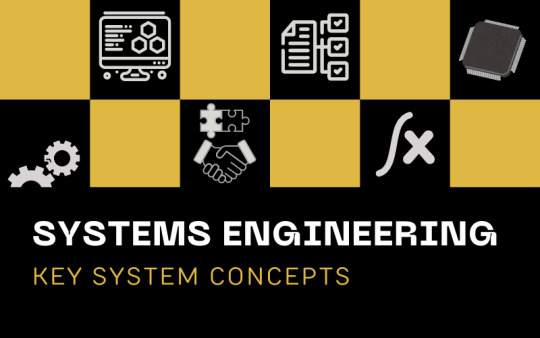
#systemsengineering keysystemsconcepts systemofintetest systemcontext#systems engineering#systemscontext#systemboundaries
0 notes
Text
Technical debt is the topic nobody wants to talk about. Is the emergence of AI an opportunity or a threat as it relates to this problem? How does your technical debt impact your growth and innovation?
Key Takeaways:
Technical debt, accumulating from outdated systems and quick fixes, poses significant security risks and stifles innovation.
The cost to address technical debt is estimated at $1.52 trillion, with broader impacts costing the U.S. $2.41 trillion annually.
The emergence of AI in software development might worsen technical debt by encouraging rapid, less optimized coding practices.
Strategies to mitigate technical debt include prioritizing system maintenance over new developments and employing AI for code analysis and updates.
Addressing technical debt is crucial for both economic efficiency and national security.
https://on.wsj.com/3QUZtQl
0 notes
Text
Road Dynamics
November 23, 2023
by dorleco
with no comment
Control Systems
Edit

Introduction
The phrase “road dynamics” refers to a wide range of topics about how cars behave and interact with their surroundings. It entails the investigation of forces, motions, and circumstances that impact the functionality, security, and comfort of automobiles while they are driven. The following are some important elements of road dynamics:
1. Dynamics of Vehicles:
Suspension Systems: A car’s suspension system is essential to keeping the tires in contact with the pavement. It aids in controlling handling, ride comfort, and vehicle stability.
2. Tire characteristics:
Traction, grip, and general handling on various road surfaces are influenced by the characteristics of tires, such as tread design, size, and inflation pressure.
Braking Systems: A vehicle’s braking system is crucial for managing speed and guaranteeing secure stops. The overall dynamics and safety of the road are enhanced by efficient braking.
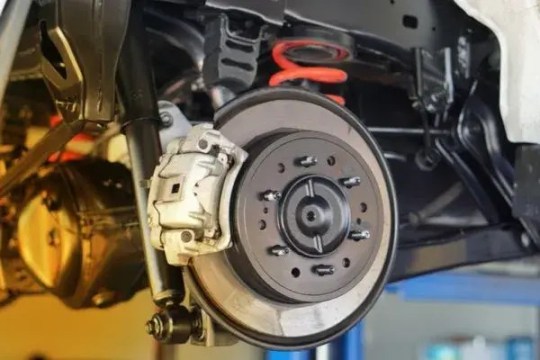
Steering Systems: A vehicle’s response to driver input is influenced by its steering mechanics. For control to be maintained during turns and maneuvers, proper steering dynamics are necessary.
3. Road Surface Conditions:
Pavement Quality: Vehicle dynamics are affected by the state and quality of the road surface. Better handling and more comfortable rides are benefits of well-maintained roadways.
Friction and Grip: Friction and grip are determined by how the tires interact with the road surface. These interactions are influenced by variables like moisture, temperature, and road texture.
4. Environmental Elements:
Weather: Unfavourable weather conditions, such as rain, ice, or snow, can cause problems for the dynamics of roads. Reduced vision and slick conditions can affect how well a car performs.
Impact of Temperature: The characteristics of road surfaces and car parts can be impacted by extremely high or low temperatures. For example, hot weather can cause road surfaces to become softer, which might reduce tire grip.
5. Conditions of Traffic:
Traffic Flow: Traffic patterns, congestion, and other drivers’ actions all have an impact on the dynamics of a road network. The goals of intelligent transportation systems include increased safety and efficient traffic flow.
Crossings and Intersections: Pedestrian crossings and intersection maneuvers require unique vehicle dynamics, necessitating careful planning and traffic control.
6. Modeling and Simulation:
Computer Simulations: To examine vehicle behavior under various conditions, engineers and researchers can model road dynamics with the aid of sophisticated computer simulations. This helps to create road systems that are safer and more effective.
7. Vehicle Control Systems:
To improve vehicle dynamics and safety, modern cars frequently have electronic control systems like ESC (Electronic Stability Control) and ABS (Anti-lock Braking System).
Benefits of Road Dynamics
Comprehending and enhancing vehicle dynamics yields several advantages in diverse facets of transportation and road infrastructure. Here are a few main benefits:
1. Road Safety:
Accident Prevention: By examining the dynamics of the road, possible risks and hazards can be found. Accidents can be prevented by implementing safety features based on this knowledge.
Electronic Stability Control (ESC): The efficiency of ESC systems, which can help prevent sliding and increase vehicle stability, particularly in difficult driving conditions, is greatly influenced by vehicle dynamics.
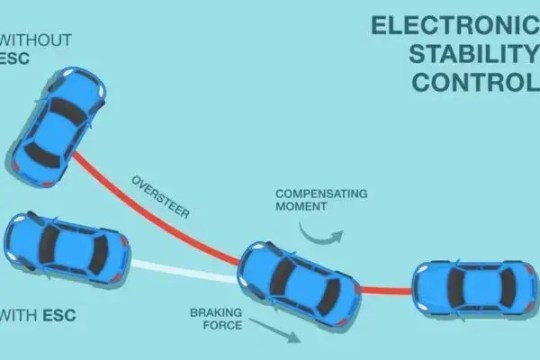
2. Infrastructure Design and Maintenance:
Pavement Design: Designing pavements that improve vehicle comfort and reduce road and vehicle wear and tear is made easier with an understanding of road dynamics.
Maintenance Planning: Upgrading overall road quality and safety, maintenance planning allows authorities to prioritize maintenance tasks and quickly address problems like potholes and uneven surfaces. This is done by evaluating vehicle dynamics.
3. Traffic Management:
Optimizing Traffic Flow: Effective traffic management depends on-road dynamics. This entails managing lane shifts, putting intelligent transportation technologies into place, and timing intersection signals optimally.
Reducing Congestion: Creating methods to ease traffic congestion and enhance overall traffic flow requires an understanding of how traffic interacts with the road environment.
4. Performance of the Vehicle:
Enhanced Handling and Stability: An understanding of road dynamics aids in the design of cars with greater overall performance through enhanced handling and stability.
Fuel Efficiency: Improving road dynamics can help create cars that run more smoothly, which will improve their fuel economy and have a smaller negative environmental impact.
5. Planning for Transportation:
Infrastructure Development: Taking into consideration variables including traffic patterns, topography, and environmental conditions, road dynamics influence decisions about the design and building of new roads or the extension of existing ones.
Public Transportation: By developing and refining public transportation routes, an understanding of vehicle dynamics contributes to the efficiency and dependability of mass transit systems.
6. Effect on the Environment:
Decreased Emissions: Smoother driving and less idling are two factors that help reduce overall vehicle emissions. These factors also include efficient traffic flow and enhanced vehicle dynamics.
Green Infrastructure: Permeable pavements and eco-friendly landscaping are two examples of solutions that can be achieved by combining an understanding of road dynamics with green infrastructure planning.
7. Emergency Reaction:
Route Planning: To ensure prompt and efficient help during emergencies, emergency responders must plan their routes with an understanding of road dynamics.
Evacuation Planning: route dynamics are taken into account while creating evacuation plans, taking into account things like route capacity, traffic patterns, and possible bottlenecks.
8. Technological Progress:
Autonomous Vehicles: To safely integrate autonomous vehicles and ensure that they can handle a variety of road conditions, it is essential to gain a thorough understanding of road dynamics.
Connected Vehicles: Road dynamics play a role in the advancement of connected vehicle technologies, which allow for real-time communication between automobiles and infrastructure to improve efficiency and safety.
Drawbacks of Road Dynamics
There are many advantages to studying and comprehending road dynamics, but there are also certain disadvantages and difficulties in this area. Here are some things to think about:
1. Complexity and Variability:
Dynamic Environment: The weather, traffic patterns, and surface conditions of the roads are all dynamic environments that are always changing. The intricacy of these factors poses a difficulty in developing general models that precisely forecast vehicle dynamics in every circumstance.
Although learning about and understanding road dynamics has numerous benefits, there are drawbacks and challenges as well. The following are some points to consider:
2. Variability and Complexity:
Dynamic Environment: The road surface conditions, traffic patterns, and weather are all examples of dynamic environments that are always shifting. The complexity of these factors makes it challenging to create universal models that accurately predict road dynamics under all conditions.
3. Human Aspects:
Road dynamics are made more unpredictable by human behavior, which includes judgments, reactions, and adherence to traffic laws. Variations in driving techniques and proficiency can impact the overall road network’s safety and effectiveness.
Adaptation Challenges: User acceptability and adaptation may be hampered by the introduction of new technology or road designs based on a better understanding of road dynamics. It could take some time for pedestrians and drivers to adapt to changes.
4. Cost and Implementation:
Infrastructure Upgrades: Making adjustments to enhance the dynamics of the road, like repainting the pavement or putting in sophisticated traffic control systems, frequently necessitates large financial outlays. The execution of essential upgrades may be impeded by financial constraints.
Technology Adoption: It can be expensive and difficult to integrate cutting-edge technologies, like smart sensors and communication systems, into the current road infrastructure because of financial limitations.
5. Effect on the Environment:
Building and Upkeep: Building and maintaining roads may hurt the environment, including problems with water runoff, habitat destruction, and soil erosion.
Vehicle Emissions: Although improved road dynamics can lead to increased fuel economy, there is still worry about the total environmental effect of road transportation, which includes vehicle emissions and the carbon footprint of road building.
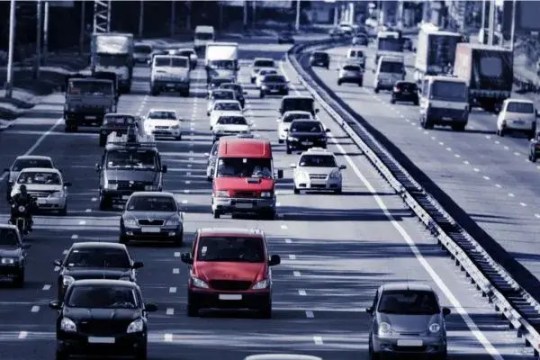
6. Security and Privacy Issues:
Data Gathering: Gathering and analyzing vast volumes of data, particularly information regarding vehicle movements, is frequently a part of advanced vehicle dynamics management. Privacy and the secure handling of sensitive data are raised by this.
Cybersecurity Risks: With road infrastructure becoming increasingly technologically advanced and networked, there is a greater chance of cybersecurity attacks, which could compromise network functionality and safety.
7. Unforeseen Challenges:
Emerging technology: The quick development of new technology, like driverless cars, might bring unexpected difficulties and uncertainties to the efficient management of traffic dynamics.
Natural catastrophes: Unexpected changes in vehicle dynamics and difficulties for transportation networks can result from occurrences like earthquakes, floods, or other natural catastrophes that have a significant influence on road infrastructure.
Conclusion:
In conclusion, road dynamics play a pivotal role in shaping the efficiency, safety, and sustainability of transportation systems. Understanding the interactions between vehicles and the road environment provides a foundation for designing infrastructure, implementing safety measures, and optimizing traffic flow. However, challenges and drawbacks exist, ranging from the complexity of dynamic environments to infrastructure limitations, human factors, and environmental concerns.
Efforts to enhance vehicle dynamics involve a multidisciplinary approach that integrates engineering, technology, and urban planning. Advanced technologies, such as intelligent transportation systems, simulation models, and real-time monitoring, contribute to improved road safety, traffic management, and vehicle performance. Nevertheless, the implementation of these technologies may face obstacles related to cost, infrastructure development, and public acceptance.
Balancing the benefits and drawbacks of road dynamics requires a holistic perspective that considers the diverse factors influencing transportation systems. Addressing challenges such as poor road quality, human behavior, and environmental impact is essential for creating resilient and sustainable road networks. As technology continues to advance, the integration of smart infrastructure, autonomous vehicles, and connectivity presents both opportunities and challenges that shape the future of vehicle dynamics.
In the pursuit of safer, more efficient, and environmentally friendly transportation systems, ongoing research, collaboration, and innovation are crucial. The field of road dynamics remains dynamic itself, evolving to meet the demands of an ever-changing world and striving to create road networks that prioritize safety, efficiency, and sustainability for the benefit of societies worldwide.
0 notes
Text
$wagg Hack - Engineering: On Separation-Of-Duties🧐
#swagghack #Engineering_OnSeparationOfDuties #ComputerEngineering #SystemsEngineering #DevOps #ThePrincipleOfDutyDesign #StevenOuandji
0 notes
Text
Jama Connect: Batch process user license changes
Sometimes, software is well design and has useful features, which are well document.
I was pleasantly surprised by Jama Connect, the software that I've used both at SKAO and ALMA to manage requirements. I tried to change many licenses at once... and just by searching on the help for batch process user licenses I got to this help page:
(By the way, how many software packages have open, linkable help? Yeah, not that many!)
And surely enough, I just followed the instructions and it worked!
How bad is our general environment when something so basic works... and it amazes us?
0 notes
Photo

Building systems engineers use computer-aided drafting and 3D modeling techniques to design the mechanical, electrical and plumbing (MEP) systems for large-scale construction projects. Learn more about Building Systems Engineering Technology, link in bio #rankentech #architecture #systemsengineering
0 notes
Photo

【Project E】 本店にクライアントがお越しになっているみたいだった。 僕も会食ご一緒にしたかった🥺 It looked like a client was visiting the main office. I wish I could have joined you for dinner. 【Project K】 プロジェクトに加入してから初めてのスプリントレビュー! クライアントにも僕を紹介して頂き無事に成果報告が出来たので良かった。 スプリントの内容的にもそんなに悪い点はなかったと思う、滑り出しは最高潮だ! My first sprint review since joining the project! I'm glad that the client introduced me and I was able to report the results successfully. I don't think there was that much wrong with the sprint, it's off to a great start! #システムエンジニア #systemsengineer #日記 #planner #diary #notebook https://www.instagram.com/p/CTlFgPhPOIF/?utm_medium=tumblr
0 notes
Photo

TOCA A MUSIQUINHA DO 007 KKKKKKK . . . . Sigam nossos parceiros @savanttecnologia . . @designelinux @sociedadepinguim @alosuporteoficial @mestresemlinux @pinguimcriativo @ubuntudiario @berg.dev @linuxnaweb @mateuslinux_ @lpic.tips @linuxmintbrasil @linuxdescomplicado @ligalinux @devops_zoeiro @infraantenada . . . . . . #unix #linux #sysadmin #datacenter #cloudcomputing #itsecurity #rhel #debian #openstack #aws #itsecurity #itsupport #devops #seginfo #systemsengineer #linuxubuntu #linuxfan #softwarelivre #tecnologiadainformação #cienciadacomputacao #tecnologiadainformacaop Reposted from @sysadmin_impaciente https://www.instagram.com/p/CQRF6YfNJpEk2Erle8HMs2EShbumydZRSu_e7A0/?utm_medium=tumblr
#unix#linux#sysadmin#datacenter#cloudcomputing#itsecurity#rhel#debian#openstack#aws#itsupport#devops#seginfo#systemsengineer#linuxubuntu#linuxfan#softwarelivre#tecnologiadainformação#cienciadacomputacao#tecnologiadainformacaop
0 notes
Photo

Excited to share the latest addition to my #etsy shop: Awesome Systems Engineer True Story White Ceramic Mug https://etsy.me/3ffKYEE #systemsengineer #systemsengineers #systemsengineering #lockheedmartin #lockheed #qualcomm #ust #northropgrumman #northrop #hewlettpackard #hewlettpackardenterprise #tataconsultancyservices #raytheon #lti #hcltechnologies #mphasis https://www.instagram.com/p/CM6POaeBRYq/?igshid=11jzmka6cz4ye
#etsy#systemsengineer#systemsengineers#systemsengineering#lockheedmartin#lockheed#qualcomm#ust#northropgrumman#northrop#hewlettpackard#hewlettpackardenterprise#tataconsultancyservices#raytheon#lti#hcltechnologies#mphasis
0 notes
Text
Job - Alert 💡

🚀 Wissenschaft trifft Praxis – Deine Chance im Bereich Agile Entwicklung!
Das Institut für Technische Produktentwicklung (ITPE) an der Universität der Bundeswehr München sucht einen **wissenschaftlichen Mitarbeiter*in (m/w/d)** für die Methodenentwicklung in der Projektleitung.
Du willst die Zukunft der agilen Produktentwicklung mechatronischer Systeme mitgestalten? Dann bist du bei uns genau richtig!
📍 Standort: München
👉 Jetzt bewerben bis 13.07.2025
🔗 Mehr Infos: https://www.academiceurope.com/ads/wissenschaftlicher-mitarbeiterin-m-w-d-fur-methodenentwicklung-fur-die-projektleitung/
0 notes
Photo
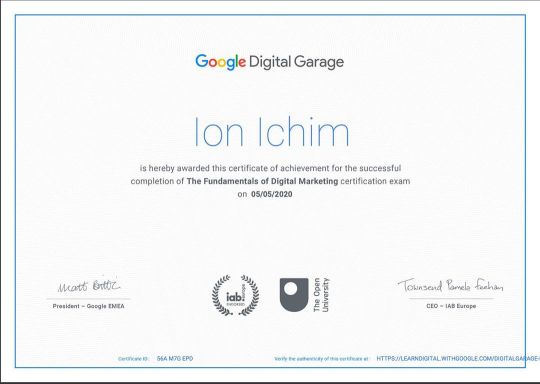
The Fundamentals of Digital Marketing Google Certification These past few weeks have been challenging for everyone physically, emotionally and financially. I have become incredibly grateful for my family and friends love and support! I have also used this time to challenge myself in new ways; creatively, physically, and academically. The Fundamentals of Digital Marketing Certification was a great way to push myself and grow my knowledge and skill set. My sincerest best wishes to everyone suffering during this global pandemic and I hope we can get through this together. Staying positive and productive, while being mindful of each others emotional states. Looking forward to the not too distant future when we can go back to some kind of normality with a greater insight in what we want and need out of life. #networkengineer #cloudengineer #graduatejobs #onlinecourses #configure #systemsengineer #graduate #google #computernetworking #itsupport #windowsserver #ccna #brizy #awsjobs #devopsjobs #covid19 #workfromhome #elearning #itcareers #tudublin #dit #hr (at Dublin, Ireland) https://www.instagram.com/p/B_za77UDFaJ/?igshid=remng2p22638
#networkengineer#cloudengineer#graduatejobs#onlinecourses#configure#systemsengineer#graduate#google#computernetworking#itsupport#windowsserver#ccna#brizy#awsjobs#devopsjobs#covid19#workfromhome#elearning#itcareers#tudublin#dit#hr
0 notes
Text
Model-Based Automotive Systems Engineering
Learn how to model and simulate system dynamics in automotive engineering.
Modeling, control design, and simulation are important tools supporting engineers in the development of automotive systems, from the early study of system concepts (when the system possibly does not exist yet) to optimization of system performance.
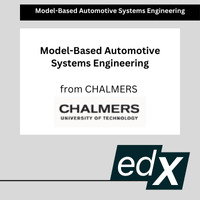
#mbse #systemsengineering #automotive #systemsperformance
0 notes
Text
Courtney Best: Member Spotlight Oct. 28, 2019

Courtney Best: Boeing / AIAA LA-LV Courtney is currently a Systems Engineer within Space and Launch at Boeing, working on the Starliner commercial crew program and in-orbit testing of satellite payload communications. Courtney received a bachelor’s degree in Aeronautical and Astronautical Engineering at Purdue University, and I am currently pursuing a master’s in Astronautical Engineering at the University of Southern California (USC). Courtney interned at the Jet Propulsion Laboratory as a Mission Systems Engineer working on New Frontiers and Discovery mission proposals for robotic exploration of the solar system. I also interned at the NASA Goddard Space Flight Center as a Propulsion Engineer working on the Restore-L mission to service a satellite in Low Earth Orbit.

Courtney Best Read the full article
0 notes
Text
Hybrid Powertrains
November 20, 2023
bydorleco
withno comment
Autonomous Vehicle Technology
Edit
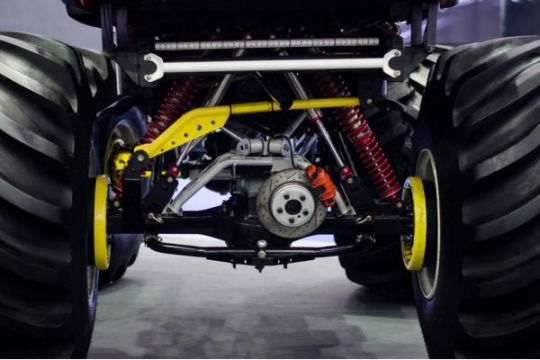
Introduction
A vehicle is propelled by a hybrid powertrain, which combines two or more different power sources. More performance, lower emissions, and improved fuel economy are frequently the main goals. The following are important points about hybrid powertrains:
1. Hybrid Architectures:
Series Hybrid: The battery powers an electric motor after the internal combustion engine (ICE) functions as a generator to produce electricity.
Parallel Hybrid: The electric motor and internal combustion engine are mechanically attached to the wheels and have the option of operating separately or in tandem.
A series-parallel hybrid architecture combines elements of parallel and series architectures to improve power distribution flexibility.
2. Braking with regeneration:
Regenerative braking systems, which turn kinetic energy during braking into electrical energy and store it in the battery for later use, are frequently found in hybrid cars.
3. Technologies for Batteries:
the lithium-ion (Li-ion) or nickel-metal hydride (NiMH) battery types used in hybrid cars.
improvements in battery technology, such as increased durability and energy density.
4. Electric Motor Types:
several kinds of electric motors, such as permanent magnet and AC induction motors.
Electric motor power and torque characteristics.
5. Energy Management:
For maximum efficiency, sophisticated control systems regulate the power transfer between the internal combustion engine and the electric motor.
Techniques for choosing whether to run on gasoline, electricity, or a combination of the two.
6. Plug-In Hybrid Electric Vehicles (PHEVs):
Because PHEVs may be externally charged, they can operate on electricity for longer periods of time before starting their internal combustion engine.
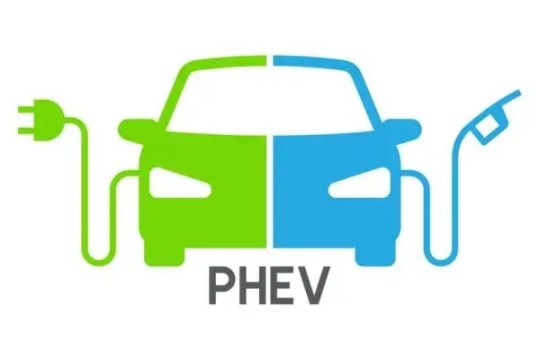
7. Fuel Efficiency and Emissions:
lower greenhouse gas emissions and better fuel economy than conventional cars.
observing laws and rules pertaining to emissions.
Benefits of Hybrid Powertrains
For some drivers and applications, hybrid powertrains are an appealing option because of their many advantages. The following are some major benefits of hybrid drivetrains:
1. Improved Fuel Efficiency:
When comparing hybrid vehicles to conventional internal combustion engine vehicles, hybrids can attain higher fuel efficiency. Fuel efficiency is possible when an internal combustion engine and an electric motor are combined.
2. Reduced Emissions:
Compared to conventional cars, hybrid powertrains reduce greenhouse gas emissions, especially in urban driving situations when electric power is frequently used.
3. Regenerative Braking:
Hybrid cars with regenerative braking systems improve overall energy efficiency and lessen wear on conventional braking systems by capturing and converting kinetic energy into electrical energy during braking.
4. Enhanced Performance:
Hybrid powertrains with electric motors can deliver immediate torque, which enhances acceleration and overall performance—particularly at lower speeds.
5. Lower Operating Costs:
Because they use less fuel and sometimes require less maintenance because of regenerative braking and fewer mechanical parts, hybrid cars sometimes have cheaper operating expenses.
6. Reduced Dependence on Fossil Fuels:
Hybrid cars reduce reliance on conventional fossil fuels by utilizing electric power, which promotes energy security and diversification of energy sources.
7. Transition to Full Electric:
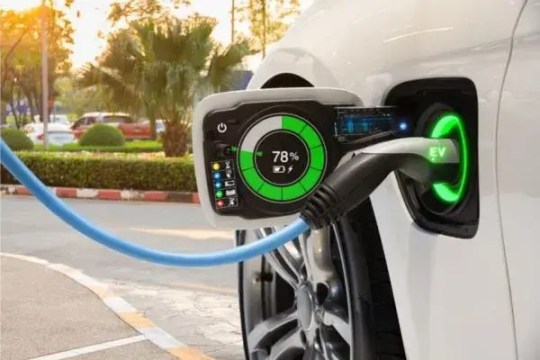
8. Tax Incentives and Rebates:
Governments in many areas provide tax breaks, rebates, or other financial advantages to promote the use of hybrid cars, lowering their overall cost to consumers.
Demerits of Hybrid Powertrains
Hybrid powertrains have significant drawbacks and restrictions in addition to their many benefits. The following are some disadvantages of hybrid powertrains:
1. Initial Cost:
In general, the initial cost of a hybrid car is more than that of a conventional internal combustion engine vehicle. This increased initial cost is partly due to the cost of the added electric components, like the electric motor and battery.
2. Complexity and Maintenance Costs:
Hybrid cars can be made more difficult by their two power sources and complex control systems. Higher maintenance and repair expenses could be the outcome of this complexity, especially for parts like the battery.
3. Limited All-Electric Range:
Hybrid cars have a restricted all-electric range as compared to plug-in electric vehicles (PHEVs), even though they can run on electricity alone for brief periods of time. For those who have longer commutes or must drive exclusively on electricity for extended periods of time, this restriction might not be adequate.
4. Weight and Space Considerations:
The weight of hybrid powertrains is raised by the addition of additional parts like electric motors and batteries. The overall performance and efficiency of the vehicle may be impacted by this additional weight. Sometimes it lessens the amount of cargo space that is available.
5. Battery Technology Dependency:
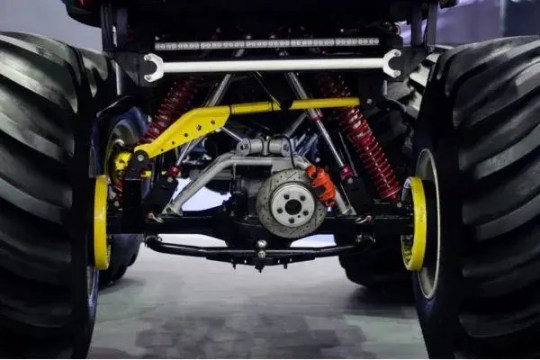
6. Charging Infrastructure:
Non-plug-in hybrid cars recharge their batteries only through regenerative braking and internal combustion. They don’t need external charging. This implies, therefore, that they are not benefited by the expanding infrastructure for charging electric vehicles.
7. Limited Fuel Economy Improvement in Highway Driving:
In stop-and-go urban traffic, hybrid vehicles typically achieve greater fuel efficiency benefits than on highways. The electric motor may contribute less to overall efficiency when operating at steady high speeds.
8. Environmental Impact of Battery Production:
Lithium-ion battery production, in particular, requires the mining and processing of resources that may have negative social and environmental effects. Other difficulties include recycling and disposing of these batteries responsibly.
Conclusion:
In conclusion, hybrid powertrains represent a significant advancement in automotive technology, offering a combination of internal combustion engines and electric propulsion systems. While they come with notable benefits, such as improved fuel efficiency, reduced emissions, and enhanced performance, they also have certain demerits and challenges that should be considered. The decision to adopt a hybrid vehicle depends on individual preferences, driving patterns, and priorities.
The benefits of hybrid powertrains include their positive impact on fuel efficiency, contributing to lower emissions, and reduced dependence on traditional fossil fuels. Regenerative braking, enhanced performance through electric motor assistance, and tax incentives further contribute to their appeal. Hybrid technology serves as a transitional step towards fully electric vehicles, providing consumers with the experience of electric propulsion while maintaining the convenience of an internal combustion engine.
However, the demerits of hybrid powertrains, such as the higher initial cost, complexity leading to potential maintenance expenses, and limitations in the all-electric range, should be carefully considered. Issues related to battery technology, including degradation over time and environmental concerns in production and disposal, add to the considerations.
As technology continues to evolve, addressing challenges associated with hybrid vehicles, including advancements in battery technology and improvements in manufacturing processes, is likely. The ongoing expansion of charging infrastructure for plug-in hybrid electric vehicles may also address some limitations. Ultimately, the decision to embrace hybrid powertrains should involve a comprehensive assessment of individual needs, driving habits, and the evolving landscape of automotive technology. Hybrid powertrains play a vital role in the broader context of sustainable transportation, contributing to a more efficient and environmentally conscious automotive industry.
#SystemsEngineering#HybridPowertrains#Automotive#technology#ECUs#GPS#Dorleco#computervision#Autonomousvehicles#selfdrivingcars#CAN
0 notes